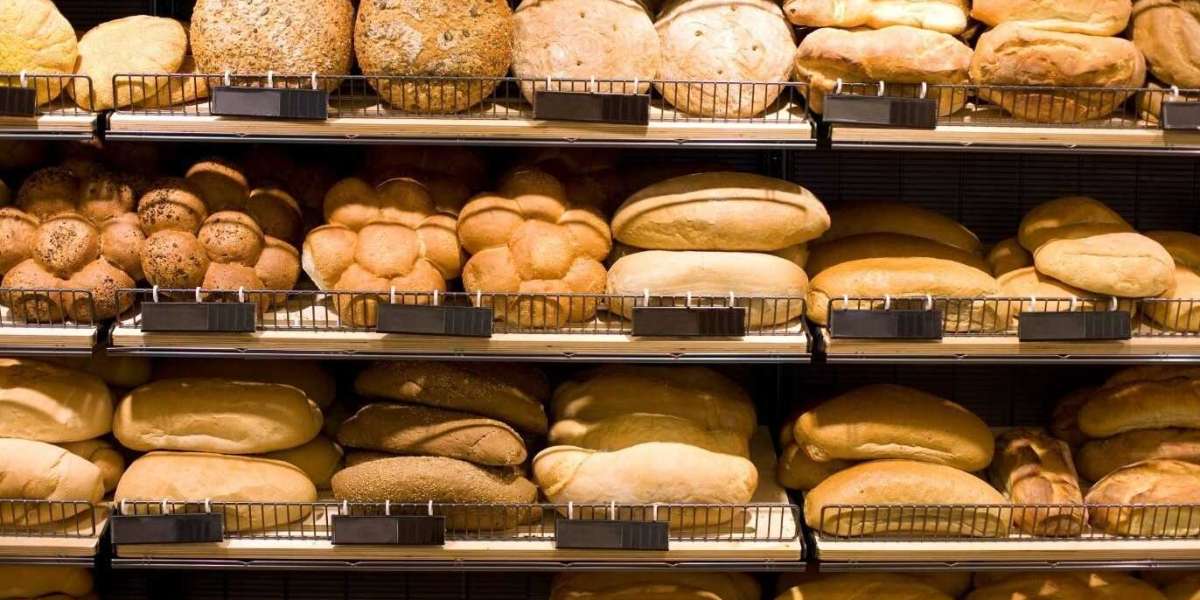The Australia bakery products market size, valued at USD 8.1 billion in 2023, is expected to grow at a CAGR of 2.7% between 2024 and 2032, reaching a projected USD 10.3 billion by 2032. This steady growth can be attributed to shifting consumer preferences, the expansion of artisanal and specialty bakery products, and an increasing focus on health-conscious eating habits. The bakery sector, a prominent sub-category within the food and beverages industry, continues to evolve with innovation, sustainability, and convenience driving the market forward.
Market Overview
The bakery products market in Australia includes bread, cakes, pastries, cookies, and specialty baked goods. This diverse sector caters to a wide range of consumer tastes, from traditional baked items to innovative, health-focused options. Rising demand for premium, gluten-free, and organic products has pushed manufacturers to adapt and diversify their offerings to cater to changing consumer expectations.
Key Benefits of Bakery Products
- Convenience: Baked goods offer ready-to-eat options that save time, catering to busy lifestyles.
- Variety: The market encompasses a broad array of products, ensuring there’s something for everyone, from classic bread to specialty pastries.
- Nutritional Options: Many bakery products are now fortified with vitamins, minerals, and protein to meet the needs of health-conscious consumers.
- Cultural Significance: Bakery products hold cultural importance and are essential in celebrations and gatherings, ensuring their consistent demand.
Key Industry Developments
- Artisanal and Gourmet Trends: The market has seen a surge in demand for artisanal baked goods that emphasize quality ingredients and traditional baking techniques.
- Sustainability Initiatives: Leading brands have adopted sustainable practices, such as eco-friendly packaging and responsible sourcing of ingredients.
- Technological Integration: Automation and advanced baking technology have improved production efficiency, reducing operational costs and ensuring consistent product quality.
- Health and Wellness Products: The development of gluten-free, low-sugar, and high-fiber baked goods has addressed the growing health concerns among consumers.
Driving Factors
- Health-Conscious Consumers: The demand for healthier baked goods, including whole-grain, gluten-free, and reduced-sugar options, has risen sharply as more Australians seek nutritious yet indulgent food.
- Innovative Flavors and Formats: The introduction of unique flavors, ingredients, and formats has captured consumer interest, encouraging repeat purchases and brand loyalty.
- Growth of E-commerce: Online shopping has made bakery products more accessible, with home delivery services boosting market penetration.
- Busy Lifestyles: The fast-paced lifestyle of Australians has driven demand for ready-to-eat and grab-and-go bakery products, which provide a convenient source of nutrition.
COVID-19 Impact
The COVID-19 pandemic significantly impacted the bakery products market in Australia. While the initial lockdowns and panic buying boosted sales of bread and other essential baked goods, disruptions in the supply chain and restrictions on in-store dining affected specialty bakery sales. The pandemic accelerated the shift toward e-commerce, as consumers turned to online platforms for their grocery needs, including bakery products. Post-pandemic, there has been a sustained interest in high-quality, health-focused, and artisanal baked goods as consumers continue to prioritize wellness and convenience.
Restraining Factors
- Rising Raw Material Costs: The fluctuating prices of essential ingredients like wheat, sugar, and dairy can impact production costs and profit margins for bakeries.
- Health Concerns: Growing awareness of the negative health impacts of excessive sugar and carbohydrate intake can limit the demand for certain bakery products.
- Competition from Homemade Goods: The trend of baking at home, popularized during the COVID-19 pandemic, poses a challenge for commercial bakeries.
- Regulatory Compliance: Adhering to food safety and labeling regulations requires ongoing investment, which can be challenging for smaller bakery businesses.
Market Segmentation
By Product Type
- Bread and Rolls
- Cakes and Pastries
- Cookies and Biscuits
- Others (Doughnuts, Muffins, etc.)
By Distribution Channel
- Supermarkets/Hypermarkets
- Specialty Stores
- Online Retail
- Convenience Stores
By Category
- Conventional
- Organic
- Gluten-Free
Market Outlook
The future of the Australia bakery products market is promising, with a steady growth trajectory supported by evolving consumer tastes, innovative product development, and sustainable practices. The focus on health and wellness is expected to drive the introduction of more nutrient-dense and functional baked goods. The market will continue to benefit from the expansion of e-commerce platforms, providing more convenience to consumers and opportunities for smaller, niche bakery brands.
Trends Shaping the Industry
- Clean Label Movement: Consumers are looking for transparency in ingredient sourcing, pushing manufacturers to offer products with simple, recognizable ingredients.
- Sustainable Packaging: The push for environmentally friendly packaging has gained momentum, with brands investing in biodegradable and recyclable materials.
- Premiumization: The rise of premium bakery products, such as sourdough and croissants made with high-quality butter, is catering to consumers willing to pay more for quality.
- Fusion Flavors: The incorporation of international and fusion flavors into traditional baked goods has been trending, creating unique offerings that attract adventurous consumers.
Regional Analysis/Insights
The highest demand for bakery products is concentrated in urban areas like Sydney, Melbourne, and Brisbane, where diverse consumer preferences and higher disposable incomes drive sales. These cities are home to a mix of traditional bakeries, gourmet outlets, and large-scale commercial producers. Regional areas are also seeing growth as artisanal and health-focused bakery trends spread beyond metropolitan centers.
Analysis and Insights
- Target Audience: The primary consumers are families, busy professionals, and health-conscious individuals. Secondary consumers include cafes, restaurants, and caterers that purchase wholesale baked goods.
- Consumer Preferences: Consumers prioritize fresh, high-quality ingredients and are increasingly interested in health-centric options that do not compromise on taste.
- Market Dynamics: The market is driven by a blend of traditional preferences and modern demands for convenience and health-conscious eating.
Key Players in the Market
- Goodman Fielder Pty Ltd
- George Weston Foods Limited
- Tip Top Bakeries
- Brumby’s Bakery
- Bakers Delight Holdings Ltd
- Ferguson Plarre Bakehouses
- Patties Foods Pty Ltd
- Coles Group (Private Label)
- Woolworths Group (Private Label)
- Sara Lee Australia
Opportunities
- Expansion of Product Lines: Brands that introduce new and unique products, such as vegan and allergen-free baked goods, can tap into niche markets.
- Partnerships with Retailers: Collaborations with major grocery chains and specialty health stores can improve visibility and accessibility.
- Technological Integration: Leveraging technology to optimize production and reduce waste can enhance profitability.
- Customization: Personalized baked goods for special events and dietary needs can attract a dedicated customer base.
Challenges
- Price Competition: Competing with cheaper, mass-produced bakery products while maintaining quality can be difficult for premium brands.
- Supply Chain Issues: Dependence on raw material imports can lead to supply chain disruptions, affecting production schedules and costs.
- Consumer Trends Shifts: Staying ahead of changing consumer preferences requires continuous innovation and flexibility.
- Sustainability Costs: Implementing eco-friendly practices and packaging solutions can be costly, impacting profit margins.
Restraints
- Health and Dietary Trends: The trend toward low-carb and sugar-free diets may limit the market for traditional baked goods.
- Regulatory Hurdles: Meeting stringent food safety regulations can be challenging, especially for small-scale producers.
- Economic Sensitivity: Economic downturns can impact discretionary spending on premium bakery products.
Scope of the Market
The scope for the Australia bakery products market is broad, covering essential items like bread as well as premium baked goods and specialty dietary options. There is ample room for innovation in product development, focusing on health, taste, and convenience. Brands that align with sustainable practices and incorporate consumer trends into their product lines will be well-positioned for future success.
The Australia bakery products market is set for steady growth, driven by consumer interest in health-focused, premium, and convenient baked goods. While challenges such as rising ingredient costs and competition from homemade products exist, opportunities for expansion through innovative products, e-commerce, and sustainable practices remain strong. Brands that focus on quality, transparency, and adaptability will continue to lead in this dynamic market landscape.








